Systematics of Living Organisms
Introduction
- Systematics: The study of the kinds, diversity, and evolutionary relationships of organisms (G. Simpson, 1961). It encompasses classification, taxonomy, and phylogeny.
- Taxonomy: The science of classifying organisms based on specific rules or principles. The term was coined by A.P. de Candolle (Swiss Botanist, 1778-1841), derived from Greek words taxis (arrangement) and nomos (law/rule).
- Classification: The arrangement of organisms into distinct categories based on similarities and dissimilarities, following a well-established scheme.
2.1 Types of Classification Systems
- Artificial Classification:
- Based on a few easily observable, non-evolutionary features like habit or color, often ignoring relationships with other organisms.
- Example: Linnaeus’s system of classification.
- Natural Classification:
- Based on objectively significant features, considering relationships among organisms.
- Example: Bentham and Hooker’s system of classification.
- Phylogenetic Classification:
- Based on common evolutionary descent, focusing on evolutionary relationships.
- Example: Engler and Prantl’s classification.
- Taxon: A taxonomic group of any rank (e.g., species, genus, family). Each category in classification is a taxon.
- Cladogram: A branching diagram showing hypothetical relationships among organisms and their common ancestors.
2.2 Three Domains of Life
- Proposed by Carl Woese (1990), life is classified into three domains, a unit larger than a kingdom:
- Archaea: Prokaryotic cells, cell wall lacks peptidoglycan, survive extreme conditions (e.g., high temperature, salinity). Known as extremophiles.
- Bacteria: Prokaryotic cells, cell wall contains peptidoglycan, includes autotrophs and heterotrophs.
- Eukarya: Eukaryotic cells, includes organisms with complex cell structures (e.g., fungi with chitinous cell walls, plants with cellulosic cell walls).
- Phylogenetic Descent: All domains share a common ancestor, with unique ribosomal RNA (rRNA) distinguishing them .
2.3 Other Taxonomic Approaches
- Chemotaxonomy:
- Classification based on similarities/differences in chemical constituents (e.g., cell wall composition: Archaea lack peptidoglycan, Bacteria have it, Fungi have chitin, Plants have cellulose).
- Numerical Taxonomy:
- Uses quantification of characters and algorithms (e.g., cluster analysis) for classification, proposed by R. Sokal and P. Sneath (1963).
- DNA Barcoding:
- Identifies species using DNA sequences from a small tissue sample.
- Steps: Collect DNA barcode data of known species, match unknown sample sequences against a barcode library.
- Applications: Protecting endangered species, pest control, identifying disease vectors, authenticating medicinal plants.
- Phylogeny:
- Studies evolutionary relationships, considering morphological and metabolic similarities.
- Examples: Woese’s three-domain system, Whittaker’s five-kingdom system.
2.4 Taxonomic Hierarchy
- Classification involves a hierarchy of steps, each representing a rank or category.
- Taxonomic Categories:
- Compulsory: Kingdom, Division/Phylum, Class, Order, Family, Genus, Species.
- Facultative: Sub-order, Sub-family, etc., used as needed.
- Taxon: A taxonomic group of any rank (e.g., Angiospermae, Malvaceae).
- Hierarchy Example (Table 2.2):
- China-rose (Plant): Kingdom: Plantae, Division: Angiospermae, Class: Dicotyledonae, Order: Malvales, Family: Malvaceae, Genus: Hibiscus, Species: rosa-sinensis.
- Cobra (Animal): Kingdom: Animalia, Phylum: Chordata, Class: Reptilia, Order: Squamata, Family: Elapidae, Genus: Naja, Species: naja.
2.5 Units of Classification
- Species:
- The lowest taxonomic unit, a group of organisms that can interbreed to produce fertile offspring.
- Considered stable but can include sub-species, varieties, or populations.
- Example: Homo sapiens (humans).
- Genus:
- A group of closely related species with similar morphological traits but usually not interbreeding.
- Example: Panthera (includes tiger, leopard, lion); Solanum (includes brinjal, potato).
- Family:
- A group of related genera.
- Example: Malvaceae (includes Hibiscus, Gossypium); Felidae (cats, tigers); Canidae (dogs).
- Order:
- A group of related families with definite affinities.
- Example: Parietales (includes Papavaraceae, Brassicaceae); Carnivora (includes Felidae, Canidae).
- Class:
- A group of related orders.
- Example: Mammalia (includes Carnivora, Primates).
- Division/Phylum:
- A group of related classes.
- Example: Angiospermae (includes Dicotyledonae, Monocotyledonae); Chordata (animals).
- Sub-kingdom:
- Groups divisions with similarities.
- Example: Phanerogams (Angiospermae, Gymnospermae).
- Kingdom:
- The highest taxonomic category, composed of sub-kingdoms.
- Example: Plantae (plants), Animalia (animals).
2.6 Nomenclature
- Nomenclature: The science of naming organisms to facilitate communication.
- Types of Names:
- Vernacular/Common Names:
- Vary by region/language, causing confusion (e.g., Mangifera indica has over 50 Sanskrit names).
- Limited usage due to lack of universality.
- Scientific Names:
- Universal, systematic names following binomial nomenclature, introduced by Carl Linnaeus (Species Plantarum, 1753).
- Governed by the International Code of Nomenclature for Algae, Fungi, and Plants (ICNAFP), updated at the 2017 Shenzhen Congress (replacing ICBN).
- Example: Helianthus annuus (sunflower).
- Vernacular/Common Names:
- Rules of Binomial Nomenclature:
- Composed of two Latin/Greek words: generic epithet (noun, capitalized) and specific epithet (adjective, lowercase).
- Underlined (handwritten) or italicized (printed).
- Each epithet: 3-13 letters.
- Author’s name may follow (e.g., Mangifera indica L., where L. is Linnaeus).
2.7 Five Kingdom System (R.H. Whittaker, 1969)
- Proposed to address limitations of Linnaeus’s two-kingdom system (Plantae, Animalia), which couldn’t classify organisms like bacteria, fungi, or Euglena.
- Based on phylogenetic relationships, it includes:
- Monera
- Protista
- Plantae
- Fungi
- Animalia
2.7.1 Kingdom Monera
- Features:
- Unicellular, prokaryotic organisms.
- Omnipresent, found in extreme environments.
- Nutrition: Photoautotrophs, chemoautotrophs, or heterotrophs (mostly).
- No defined nucleus; DNA in a nucleoid, may have plasmids.
- Cell wall: Peptidoglycan (murein), except in Archaebacteria.
- No membrane-bound organelles; 70S ribosomes.
- Reproduction: Asexual (binary fission, budding); rarely sexual (conjugation).
- Morphology (Fig 2.3):
- Coccus (spherical), Bacillus (rod-shaped), Vibrio (comma/kidney-shaped), Spirillum (spiral).
- Types:
- Archaebacteria:
- Extremophiles (e.g., halophiles, thermophiles).
- Cell wall lacks peptidoglycan.
- Example: Methanogenic bacteria (produce methane in biogas plants).
- Eubacteria:
- True bacteria with peptidoglycan cell walls.
- Autotrophs (photosynthetic like Chlorobium, chemosynthetic like sulfur bacteria) or heterotrophs.
- Heterotrophs: Decomposers, pathogens (e.g., typhoid, cholera), or useful (e.g., Lactobacilli for curdling, Streptomyces for antibiotics).
- Archaebacteria:
- Cyanobacteria (Fig 2.4):
- Multicellular, filamentous, prokaryotic.
- Covered by a mucilaginous sheath, have heterocysts for nitrogen fixation.
- Photosynthetic pigments: Chl-a, Chl-b, carotenes, xanthophylls.
- Example: Nostoc.
- Mycoplasma:
- Smallest living forms, lack cell walls, often pathogenic, resistant to antibiotics.
2.7.2 Kingdom Protista
- Features:
- Unicellular, eukaryotic organisms.
- Link to Plantae, Fungi, and Animalia.
Types:
Plant-like Protists (Chrysophytes):
- Photosynthetic, major ocean producers.
- Diatoms (Fig 2.5): Silica cell walls, form diatomaceous earth (used in polishing/filtration).
- Dinoflagellates (Fig 2.6): Cellulosic plates, photosynthetic, cause red tide (e.g., Gonyaulax).
- Euglenoids (Fig 2.7): No cell wall, proteinaceous pellicle, two flagella, photosynthetic or heterotrophic (e.g., Euglena).
- Animal-like Protists (Protozoans):
- Heterotrophic, no cell wall.
- Types:
- Amoeboid (Amoeba, Entamoeba causes dysentery).
- Flagellated (Trypanosoma causes sleeping sickness).
- Ciliated (Paramecium, Fig 2.8, has gullet and cilia).
- Sporozoan (Plasmodium causes malaria).
- Fungi-like Protists (Myxomycetes):
- Saprophytic, form plasmodium (cell mass), tough spores (e.g., Stemonitis).
2.7.3 Kingdom Plantae
- Features:
- Multicellular, eukaryotic, mostly autotrophic (chlorophyll-containing).
- Cell wall: Cellulose.
- Includes semi-autotrophic (insectivorous, e.g., Venus flytrap) and heterotrophic (parasitic, e.g., Cuscuta).
- Alternation of generations (two distinct life cycle phases).
- Groups:
- Cryptogams (non-seed plants).
- Phanerogams (seed plants).
- Detailed study in the next chapter.
2.7.4 Kingdom Fungi
- Features:
- Eukaryotic, heterotrophic, extracellular digestion.
- Found in warm, humid places.
- Body: Unicellular or mycelium (hyphae network).
- Hyphae: Septate (with cross-walls) or coenocytic (non-septate, multinucleate).
- Cell wall: Chitin or fungal cellulose.
- Nutrition: Saprophytic, parasitic, or predatory.
- Reproduction: Asexual (fragmentation, fission, budding) or sexual.
- Symbiotic: Lichens (with algae), mycorrhiza (with plant roots).
- Uses:
- Food: Mushrooms, morels, truffles.
- Industry: Saccharomyces (yeast) for baking/brewing.
- Medicine: Penicillium (antibiotics).
- Research: Neurospora (genetics).
- Harmful: Cause plant/animal diseases (e.g., Puccinia).
Classification:
- Phycomycetes (Algal Fungi) (Fig 2.9):
- Aseptate, coenocytic hyphae, grow in moist habitats.
- Example: Mucor, Rhizopus (bread mold), Albugo (parasitic).
- Ascomycetes (Sac Fungi) (Fig 2.10):
- Septate hyphae, multicellular (rarely unicellular, e.g., yeast).
- Example: Aspergillus, Penicillium, Saccharomyces, Neurospora.
- Basidiomycetes (Club Fungi) (Fig 2.11):
- Septate hyphae.
- Example: Agaricus (mushroom), Puccinia (rusts), Ustilago (smuts).
- Deuteromycetes (Imperfect Fungi) (Fig 2.12):
- Asexual reproduction only.
- Example: Alternaria, Colletotrichum.
Lichens:
- Symbiotic association of algae (phycobiont) and fungi (mycobiont).
- Algae provide food, fungi provide shelter and minerals.
- Pollution indicators, aid in soil formation (e.g., Parmelia).
2.7.5 Kingdom Animalia
- Features:
- Multicellular, eukaryotic, heterotrophic (holozoic nutrition).
- No cell wall or chlorophyll.
- Determinate growth, capable of locomotion.
- Detailed study in Chapter 4.
2.7.6 Acellular Organisms (Not in Five Kingdoms)
Viruses (Fig 2.13, 2.14):
- Named by Louis Pasteur, described as contagium vivum fluidum by M.J. Beijernck.
- Obligate parasites, inert outside host cells, can be crystallized.
- Structure: Nucleic acid (DNA or RNA, never both) surrounded by a protein capsid (made of capsomeres).
- Types: DNA viruses, RNA viruses, bacteriophages (infect bacteria, e.g., Fig 2.14).
- Diseases: Plant (leaf curling, mosaic), animal (foot-and-mouth, swine flu), human (smallpox, AIDS).
Viroids:
- Single-stranded RNA, no protein coat, smaller than viruses.
- Cause diseases like potato spindle tuber (discovered by T.O. Diener, 1971).
Prions:
- Proteinaceous infectious particles causing neurological diseases (e.g., mad cow disease, Creutzfeldt-Jakob disease).

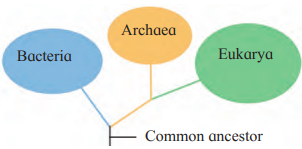
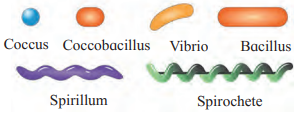
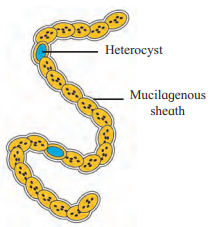
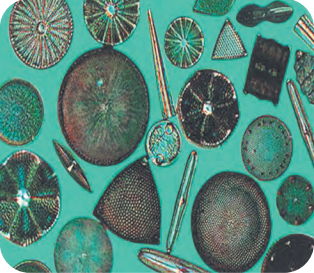

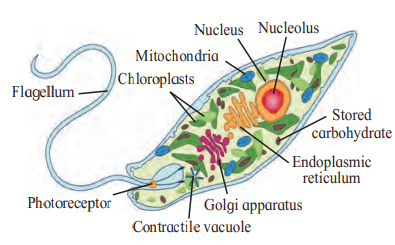
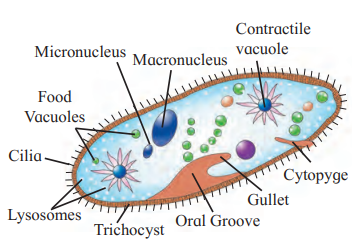
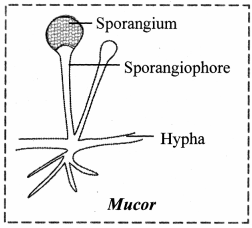
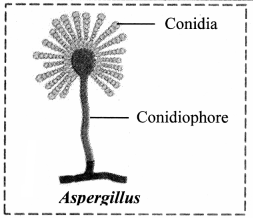

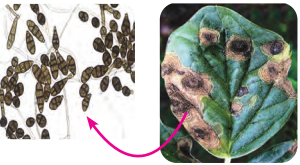
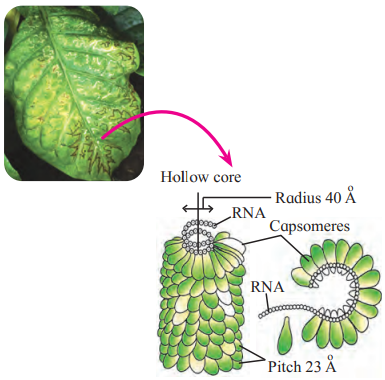
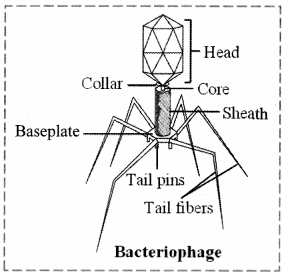
Leave a Reply